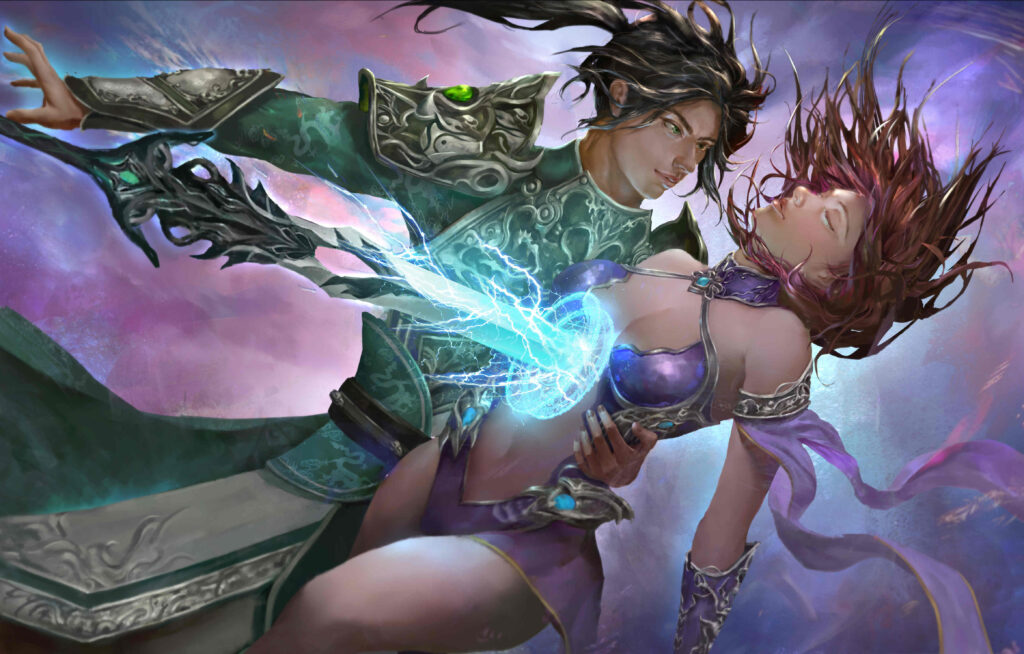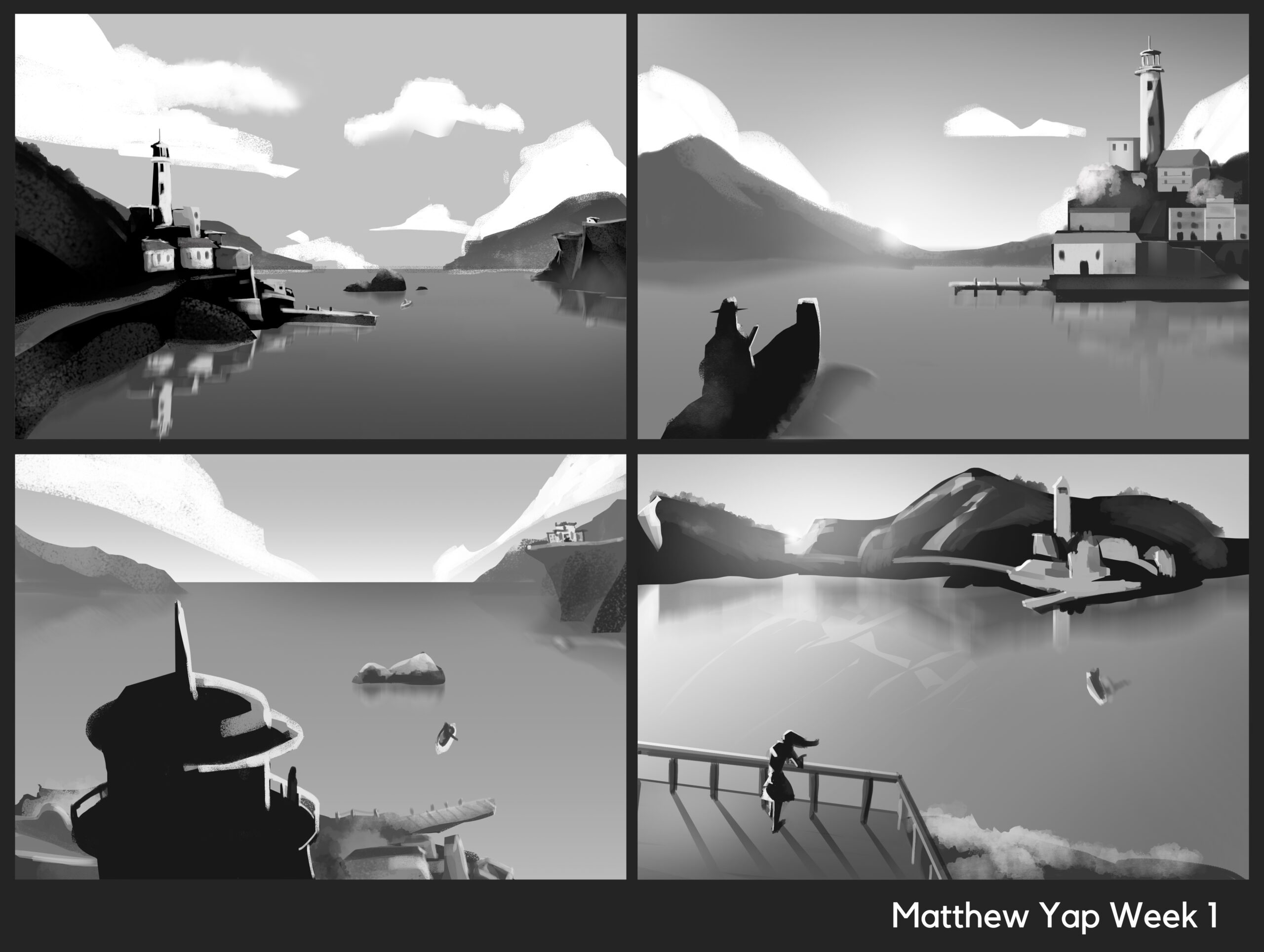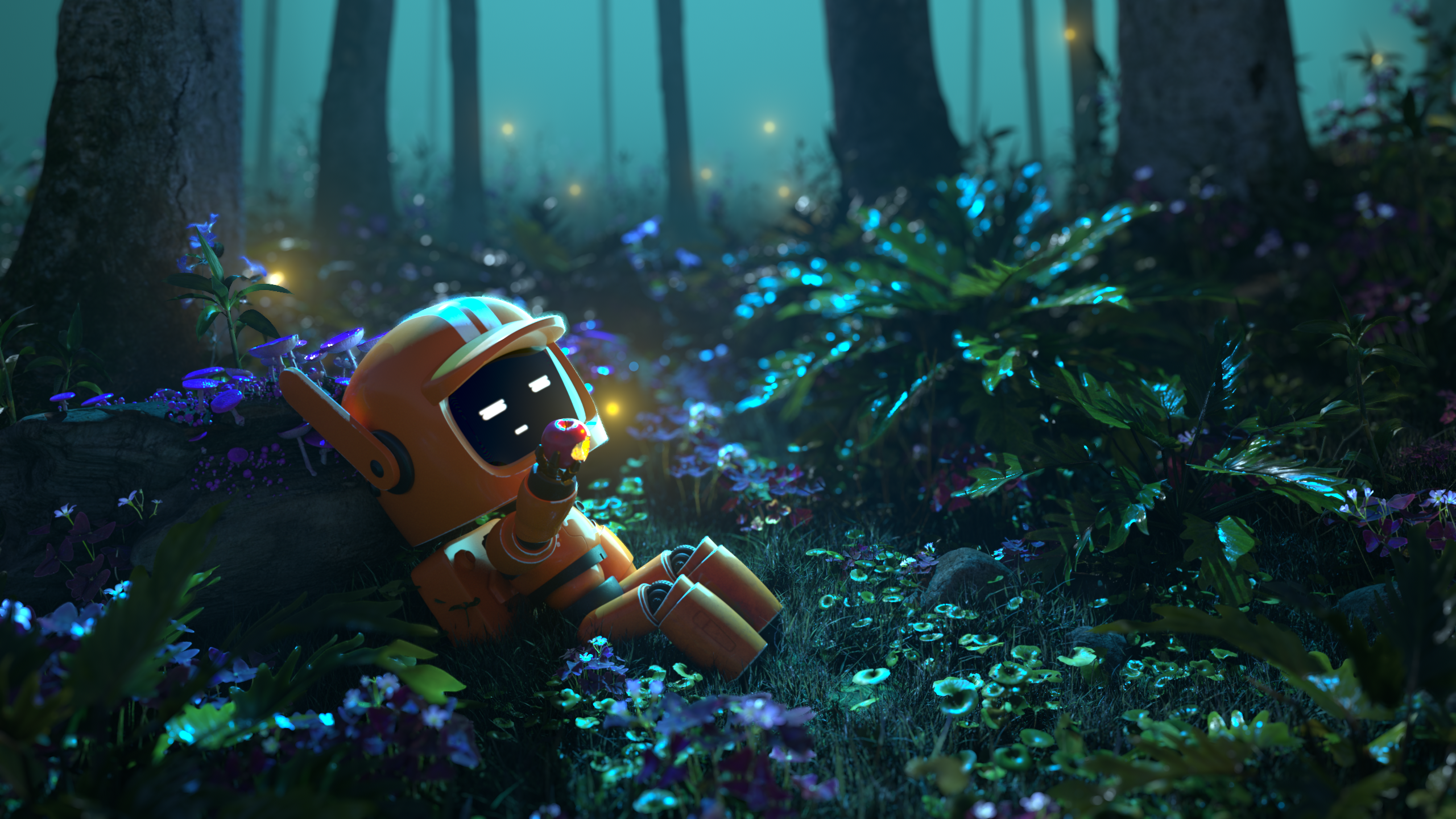12 Common Mistakes of Digital Art Beginners
As beginners in digital art, we all make mistakes and learn from them. Here I’ve written down 12 common beginner mistakes, and we’ll find a solution for each one.
It is important to learn from mistakes, but you don’t have to fail over and over again when you can learn from someone who has made a mistake before and found a solution. It will save you from frustration.
Remember, I’m thinking about creating professional, realistic artwork. Highly programmed and abstract art is not the game here, so you’ll have to go elsewhere to find it.
I just want things to look really cool and real, like you feel like you can actually reach out and touch the concept of the environment you just created.
So let’s take a look at these common beginner mistakes.
- Never knowing where to start
- Too much detail
- Lack of value dynamics and atmospheric perspective
- Overusing pure white
- Failure to use warm and cold tones effectively
- Using only hard brushes or only soft brushes
- Using too many saturated colors
- Getting stuck on a brush
- Not calibrating your tablet
- Lack of practice
- Afraid to start
- Not paying attention to your health
Mistake 1: Never knowing where to start
When you’re a beginner and want to start a new painting, a blank white canvas can sometimes seem quite daunting. If there is no idea or no direction at all in your mind to paint where you want to go, it’s hard to start filling the canvas with something meaningful and you’ll just get frustrated and turn off Photoshop.
Solution: One important thing to do before you start painting is to have an idea before you start painting. You might say you want to paint a female humanoid sea creature, which is fine – you don’t have to know exactly what that sea creature will look like, but you at least have an idea and a direction. This will help a lot when starting a new painting and brainstorming as you sketch out your concept.
Another thing you can do is to check some sources of inspiration for things that are similar to the concept you are trying to create. If it’s a female sea creature in human form, look at the anatomy of the female, perhaps fish scales, dolphin skin, fins, etc. Maybe this creature has lobster-like claws.
All of these will help you sketch out ideas and continue your drawing, and even provide some great design ideas.
Mistake 2: Too much detail
Another thing you probably do a lot is trying to add detail anywhere and try to perfect every square centimeter of my paintings. Sometimes you become obsessed with making it as detailed as possible, even in the corners. One thing you have to be realizing.
If your viewer sees a painting that is so rich in detail, you will be overwhelmed, which can hurt your painting – even if the details are beautiful and intricate.
Solution: A painting should sell an idea, a story, a concept, and you can do this by using composition, lighting, contrast, story elements, etc.-not by overusing details to try to make your painting look complete and beautiful.
For that, you need to create focus, not over-focus on everything, and over-define the entire scene. If compelling details are all over the place, your painting will lose focus, direction, and flow.
The important areas of focus are the ones that should get your audience’s attention, not those unimportant areas that no one looks at for too long.
Mistake 3: Lack of value dynamics and atmospheric perspective
Many beginners do not properly utilize value ranges to create realistic artwork with a dynamic appearance. The value dynamics may be there, they just aren’t used correctly.
Another thing is atmospheric perspective. Used properly, it is very important to tell the viewer what is big, far, and close, and to give the impression of scale, atmosphere, etc. Even in close-up environments and character concepts, atmospheric perspective is used to “trick” the eye, to help the viewer understand what they are looking at, and to create depth.
If you use most of the spectrum of contrast in your paintings, then you can more satisfactorily convey an idea if you learn how to use value dynamics and atmospheric perspective correctly.
Mistake 4: Overusing pure white
Pure white and pure black are things that are often used in beginner painting. These extremes should be used with caution, especially for pure white, but not for pure black.
Pure white is very rare in nature, and only appears when you look directly at the sun or moon, or bright light. The pure white in your painting should be reserved for these focused light sources and effects.
If you use too much pure white or pure black, your painting will look like what we call “exaggerated”, with no more information than that color, and value pushed to its limits.
Mistake 5: Failure to use warm and cold tones effectively
Color theory is a very important aspect of painting and expressing ideas. Getting colors to work together and in your favor takes research, practice and time. Even professional artists do not fully understand color theory; all we do is make things look better and more natural.
Understanding the use of cool and warm colors will greatly help your paintings look more vivid and stand out.
Solution. Look into what’s out there, or photographs. Look at the shadows and the tones of the parts that are illuminated. Study what a sunlit grove looks like on a bright sunny day. What about on a cloudy day? How does it compare? On a clear day, the shadows are usually a cooler blue, while the brighter parts are warmer.
Mistake 6: Using only hard brushes or only soft brushes
This is a pretty tricky mistake because knowing when to use soft edges and when to use hard edges and transitions is something that combines many aspects of painting; flow, focus, contrast, and composition. Fortunately, you can learn a lot by experimenting.
Contrast occurs where you use hard edges, and contrast provides focus wherever it exists. Using a soft brush and getting a soft edge helps make the hard edge stand out more.
Solution: Try to think of where you would have a softer quality in your work and where you would have a harder quality. The grass is usually very soft and has some contrasting areas everywhere, while mountains have more defined textures and edges.
Mistake 7: Using too many saturated colors
When starting, most beginners have trouble with color, so they tend to just choose very strong colors from the color wheel and end up with too many powerful, irresistible saturated colors.
Stay in this zone most of the time and you’ll have a very realistic color and value scheme. If you look around, you’ll see that the saturation and value range of most natural things is in this zone.
Nothing is too saturated, too bright, or too dark; it’s all a balanced, realistic color and value scheme.
Mistake 8: Getting stuck on a brush
Beginners tend to rely on brushes to improve their digital painting skills. But just like different graphite pencils won’t make you better at drawing on paper, having hundreds of different Photoshop brushes won’t make you great.
The solution: pick a brush pack, find your favorite brushes and stick with them! Using a few brushes that you feel comfortable with is priceless as you start to get a feel for how they behave, how you use them, and how they express your ideas – just like you are used to writing or drawing with graphite pencils.

Mistake 9: Not calibrating your tablet
Having a properly calibrated drawing tablet is important and is often overlooked as a beginner because let’s face it, you just want to start painting!
Solution: Calibrating means you get into the settings of your digital tablet, change the feel of the pen tip by the sensitivity of the pen, use the buttons to set important shortcuts and functions to speed up your workflow and make it smoother, and make it work with you, not you and it.
Also remember to sit properly on the tablet, which means placing it right in front of the computer screen – not tilted.
Mistake 10: Lack of practice
People are always asking for the fastest way to improve their skills, and no matter what is discussed, the answer is usually the same. It’s all about practice, and acting on the constructive criticism you receive from your audience and other artists. Digital art is no exception.
Standout artists are not surprising. They shine because of their hard work, conscientiousness, and dedication. The practice may not be perfect, but it will certainly help you get closer to perfection than if you didn’t practice at all.
Mistake 11: Afraid to start
It’s common for new digital artists to work on a unique piece of art for a long time. They think, “I’m a beginner, so I can take my time.” While this is true to a certain extent, perfectionism is a real problem that plagues artists around the world, preventing them from creating as much art as possible.
By practicing over and over again, you will get better at something. If you stay at the same step in the process forever, you will never achieve conscious and meaningful repetition.
Know when an artwork might not get better (even if you have to put more time and effort into it) and when you should move on to the next one.
Mistake 12: Not paying attention to your health
If your wrist or back hurts from working, it may be a signal from your body telling you to take a break. It’s easy to give your full attention to your work, especially when you’re inspired or determined, but listen to your body.
Take a break. Get up from your chair and walk around, or do stretching exercises during your work. When you return to work, try to maintain a good posture. Use other arm pivots to reduce the strain on your wrists when drawing or using a mouse.
If you work at your desk for several hours at a time, you may even want to consider purchasing a quality work chair, armrests, or a mouse pad with wrist support.
All these mistakes become less and less, the more you practice painting, the more you study your favorite artists and your natural environment.
As you paint more and study your surroundings as well as favorite artwork and photographs, you become better and better.
I hope you have learned something new and can use these solutions when you paint yourself. Feel free to keep following Wingfox.
How to Improve your Digital Art Skills Fast?
In this article, we combine some of our most popular tutorials in Wingfox, as well as everything from portrait techniques to character design, to answer your question: How can you quickly improve your digital art skills?
Post a Comment
要发表评论,您必须先登录。















Pingback: 12 Common Mistakes of Digital Art Beginners | a...
2022-02-22